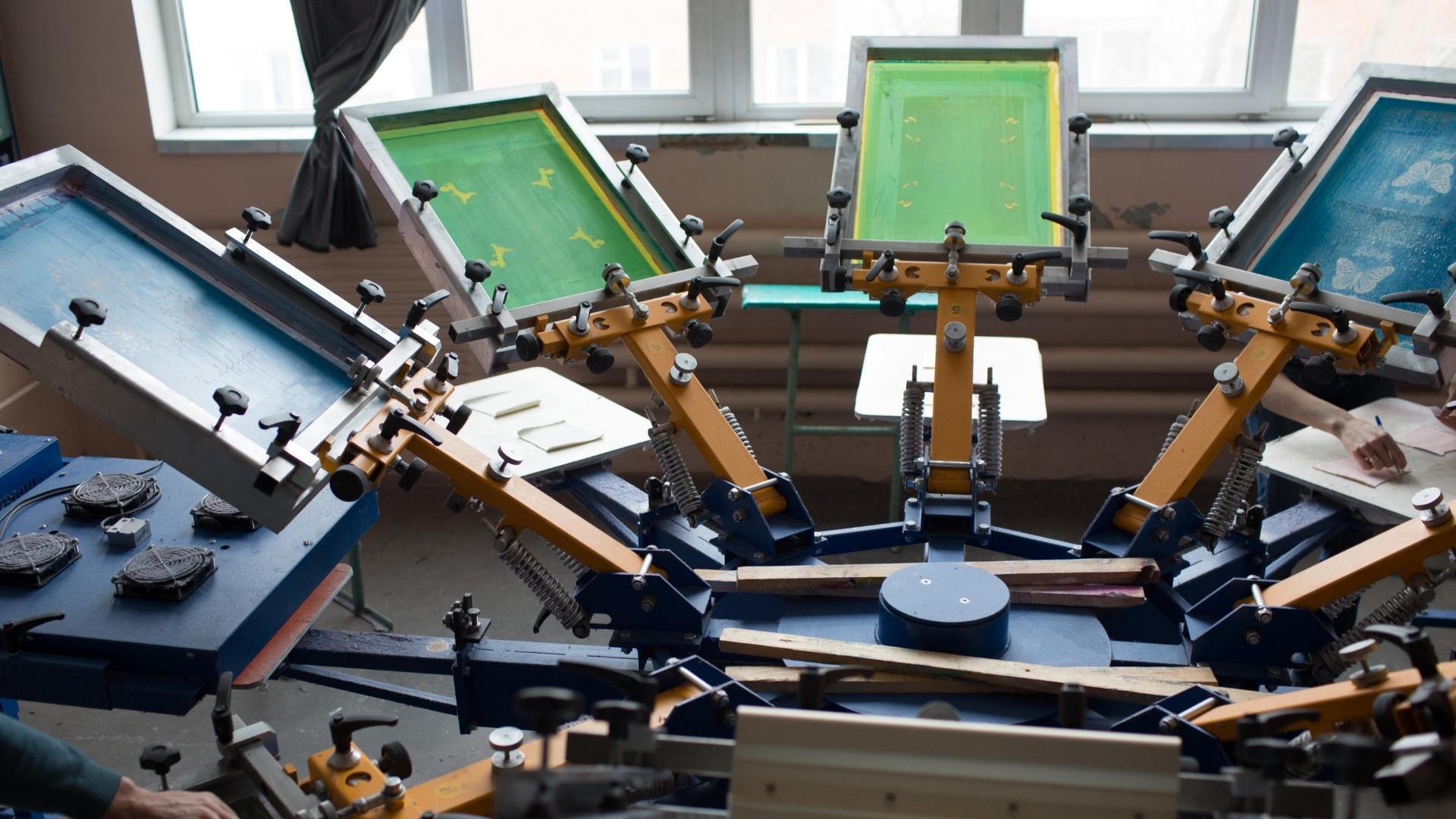The Important Overview to Comprehending Screen Printing and Its Versatile Makes use of
Screen printing has an abundant history that goes back to old times, progressing right into an innovative strategy used throughout numerous markets today. This guide checks out the ins and outs of the screen printing procedure, describing its applications in marketing, home, and fashion decoration - 10:9 Design contact. Recognizing these basics can open imaginative possibility for both creative and commercial projects. The complying with sections will expose vital suggestions and methods to enhance one's screen printing ventures
The History of Screen Printing
Although screen printing has roots that map back centuries, its advancement shows the creative and technical innovations of various societies. Coming from old China, the strategy was at first utilized for embellishing textiles and later infect Japan, where it came to be important to Ukiyo-e woodblock printing. The approach shifted to Europe in the 18th century, where it acquired popularity amongst artisans and industrial printers. The development of image emulsion in the 20th century changed screen printing, permitting more complex styles and better efficiency. Musicians like Andy Warhol further propelled its appeal, utilizing the tool to produce famous works that mixed commercialism and art. By the late 20th century, screen printing had actually established itself as a versatile method, utilized in style, advertising and marketing, and art. Today, it remains to evolve, integrating electronic innovation and increasing its applications throughout different markets.
The Screen Printing Process Explained
Screen printing changes artistic visions right into tangible layouts with a series of precise steps. A photo is developed and after that transferred onto a screen, normally made of great mesh fabric stretched over a frame. A light-sensitive emulsion is used to the screen, which is revealed to light, hardening in areas not covered by the photo. After washing out the unhardened emulsion, a pattern is formed.
Next, the screen is positioned over the substratum, whether it be textile, paper, or another product. Ink is after that pressed through the open areas of the stencil using a squeegee, depositing the design onto the substratum listed below. This process can be repeated for numerous colors, calling for different screens for every color. The printed product is treated making use of warm to assure the ink adheres effectively, resulting in a long lasting, lively style prepared for use.
Types of Screen Printing Techniques

Furthermore, specialized techniques, such as discharge screen printing, get rid of dye from the material to produce softer prints, while foil screen printing uses metal aluminum foil to achieve a glossy coating (10:9 Design Texas). Each method uses unique attributes, satisfying you could try here numerous innovative demands and manufacturing scales, inevitably increasing the possibilities within the screen printing domain
Applications of Screen Printing in Numerous Industries

In addition, the signage and advertising fields utilize screen printing for creating appealing displays and banners. This technique permits vibrant colors and elaborate styles that record interest. In electronic devices, screen printing is used for using conductive inks to circuit boards, essential for component connections. The home design sector accepts screen printing to create distinctive styles on fabrics and wall surface art. On the whole, screen printing acts as a critical device throughout diverse areas, improving items with customized and visually attractive graphics.
Tips for Successful Screen Printing Projects
While embarking on a screen printing project, mindful focus to information can significantly enhance the final result. Initially, picking top notch products is essential; this includes the screen, inks, and substratums. Using appropriate mesh matters can influence ink deposition and information resolution. Preparation is equally vital; complete cleaning of displays and appropriate direct exposure times assure crisp prints.
Next off, exact registration is important for multi-color prints. Utilizing positioning devices can help accomplish specific layering. In addition, screening prints on scrap products before production aids identify possible issues without throwing away sources.

Frequently Asked Concerns
What Products Are Finest for Screen Printing on Textile?
Cotton and polyester blends are ideal for screen printing on fabric as a result of their toughness and ink absorption. In addition, specialized textiles like silk or canvas can generate distinct appearances and surfaces, improving the general design top quality.
Exactly how Do I Tidy and Maintain Screen Printing Tools?
To preserve and clean screen printing devices, one ought to routinely clean displays with ideal solvents, evaluate squeegees for wear, lube moving components, and store all things in a completely dry, dust-free environment to prolong their life-span.
What Are the Environmental Effects of Screen Printing?
Screen printing can have substantial ecological influences, including chemical waste from solvents and inks, water use during cleaning processes, and energy usage. Green products and lasting practices are vital for reducing these unfavorable effects.
Can Screen Printing Be Done in the house Efficiently?
Screen printing can be properly done at home with the appropriate products and strategies. Enthusiasts can create quality prints, though success relies on their skill degree, equipment, and understanding of the procedure involved.
What Are the Expenses Related To Starting a Screen Printing Service?

Starting a screen printing company involves prices for devices, materials, and workspace. Initial costs commonly range from a couple of hundred to several thousand dollars, depending on the range, quality of equipment, and desired production capability.
Screen printing has an abundant history that dates back to old times, progressing into a sophisticated technique made use of throughout numerous industries today. Another technique, rotating screen printing, uses round screens, assisting in continuous printing on fabric rolls, therefore enhancing effectiveness for large-scale manufacturings. Additionally, specialized methods, such as discharge screen printing, get rid of color from the material to develop softer prints, while aluminum foil screen printing uses metallic aluminum foil to attain a glossy coating. In the fashion sector, screen printing is widely made use of to create dynamic designs on garments, enabling brands to showcase their unique styles. Cotton and polyester blends are excellent for screen printing on material due to their longevity and ink absorption.